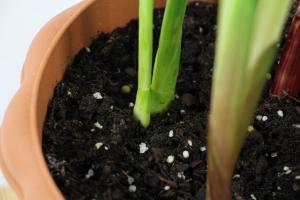How to Make a Water Basin for Plants
Having a water basin for your plants is a great way to keep them hydrated and healthy. Not to mention, it adds a beautiful touch to your garden or indoor plants. Here is a step-by-step guide on how to make a water basin for your plants:
Materials Needed:
A container (ceramic, clay, or plastic)
A drilling tool or a sharp object like a knife, scissors or corkscrew
Rocks or pebbles
A water-resistant tray or saucer
Water
Steps:
Step 1: Choose a Container
The first step is to choose a container that will suit your plants’ needs. You can use ceramic, clay, or plastic containers. Ensure that the container is water-resistant and has a hole at the bottom. The hole should be big enough to allow water to drain, but not too big to avoid the soil from draining out.
Step 2: Drill a Hole
Once you have the container, the next step is to drill a hole at the bottom if it does not have one already. You can use a drilling tool, a knife, scissors or a corkscrew to make the hole. Ensure that the hole is big enough to allow excess water to drain out, but not too big enough to allow the soil to drain out. You can create more holes if the container is big.
Step 3: Add Rocks or Pebbles
Once you have drilled a hole, the next step is to add rocks or pebbles at the bottom of the container. This will provide proper drainage and prevent the soil from blocking the hole. Ensure that the rocks or pebbles cover the hole entirely.
Step 4: Place the Container in a Water-Resistant Tray
Place the container in a water-resistant tray or saucer. The tray will hold excess water that drains out, preventing it from spilling on your floors. It is essential to select a tray that has a size that fits the container, ensuring that it does not take too much space.
Step 5: Water Your Plant
Once you have placed the container in a tray or saucer, the next step is to add water to the container. Fill the container with water until it reaches the top layer of rocks or pebbles. Avoid overfilling the container, as it will result in stagnant water, which can lead to plant rot.
Step 6: Add Soil and Plant Your Plant
After filling the container with water, the next step is to add soil and plant your plant. Ensure that the plant’s roots are covered with soil and are moist. Water your plant again after planting to ensure that the soil settles correctly.
Final Thoughts
A water basin for plants is a great way of keeping your plant hydrated and healthy. It is essential to choose the right container size, drill a hole for proper drainage, add rocks or pebbles, and use a water-resistant tray. You can now enjoy a beautiful and healthy plant that adds a natural touch to your home or garden.

 how many times do yo...
how many times do yo... how many planted tre...
how many planted tre... how many pine trees ...
how many pine trees ... how many pecan trees...
how many pecan trees... how many plants comp...
how many plants comp... how many plants can ...
how many plants can ... how many plants and ...
how many plants and ... how many pepper plan...
how many pepper plan...




























